The Flashman miniature in the following photos is a 60mm resin kit figure that’s had some major conversion carried out, with the head changed and mutton-chop whiskers added to the replacement head using Milliput 2-part epoxy filler. The ammunition and percussion cap pouches were also sculpted from Milliput. The firearm and sword are from my spares box.
The base was coated with a gunge of diluted PVA glue and a teaspoon of ground dried allspice berries to thicken it up a bit, then some sparse foliage sprinkled on while the glue was still tacky.
The cigar he’s smoking was probably looted from the Nana Sahib’s personal humidor.
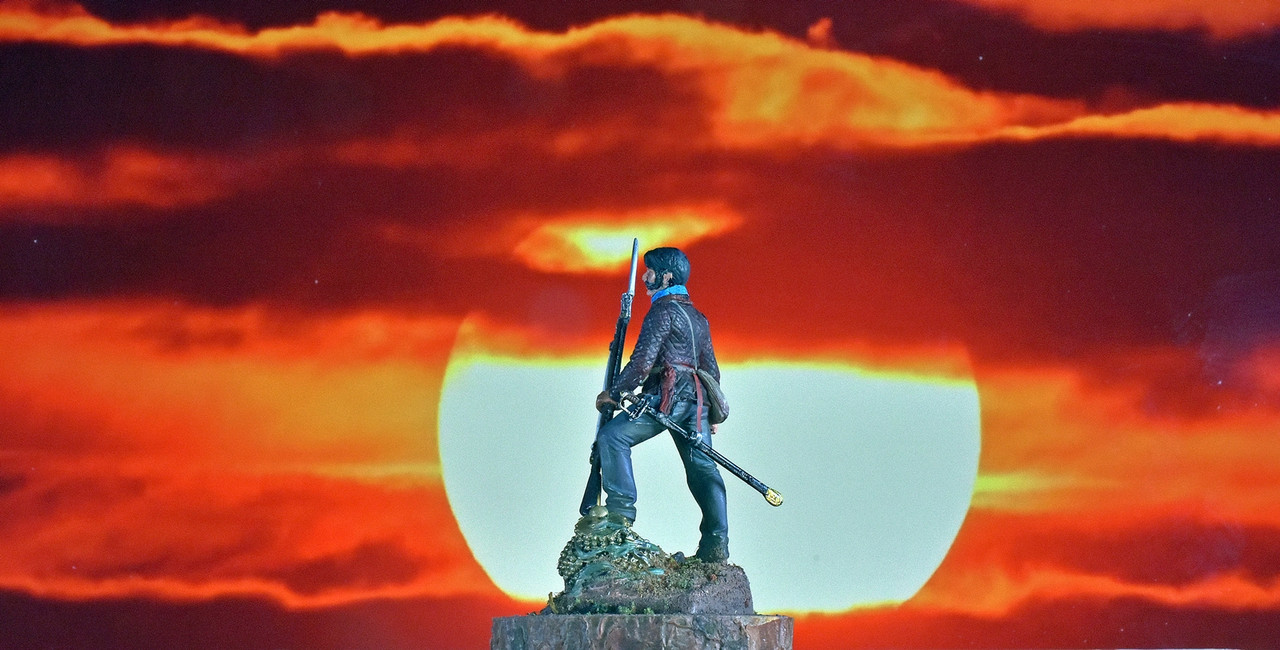
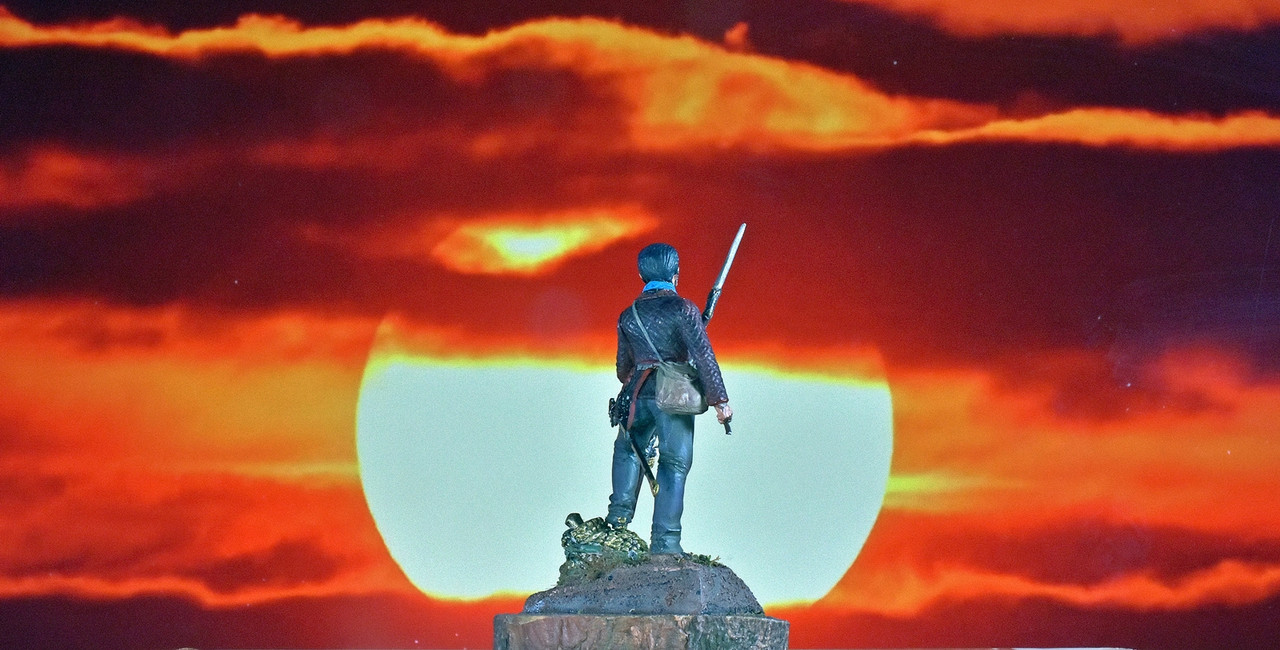
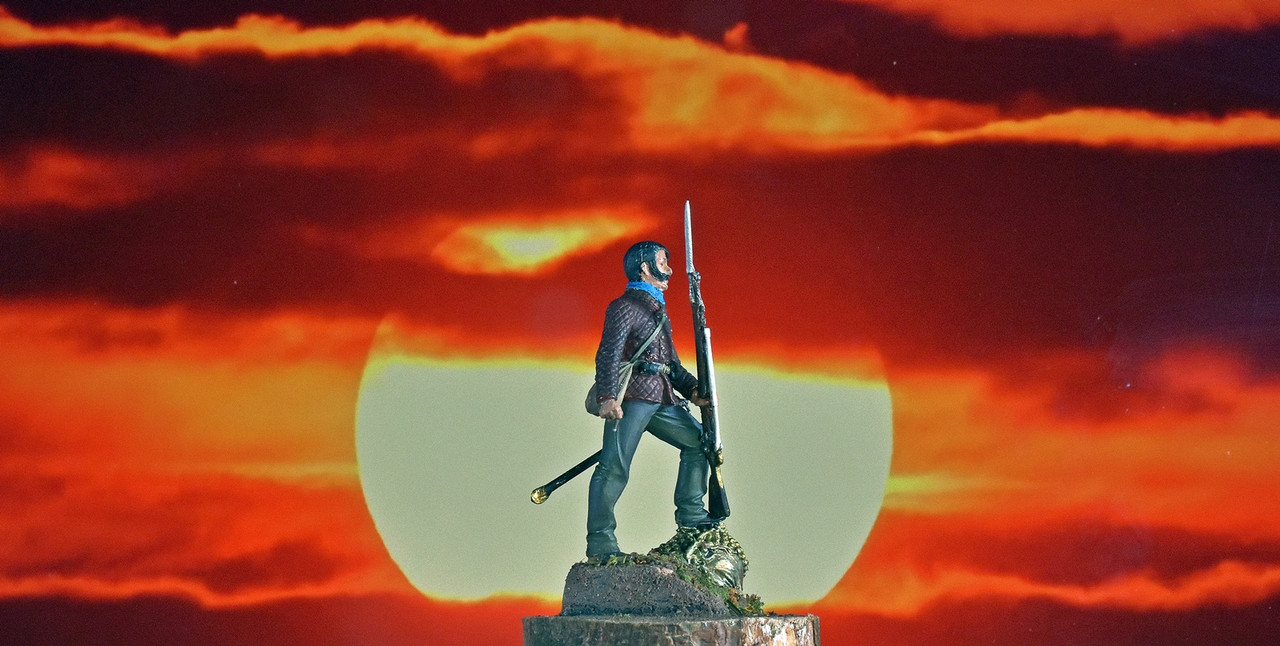
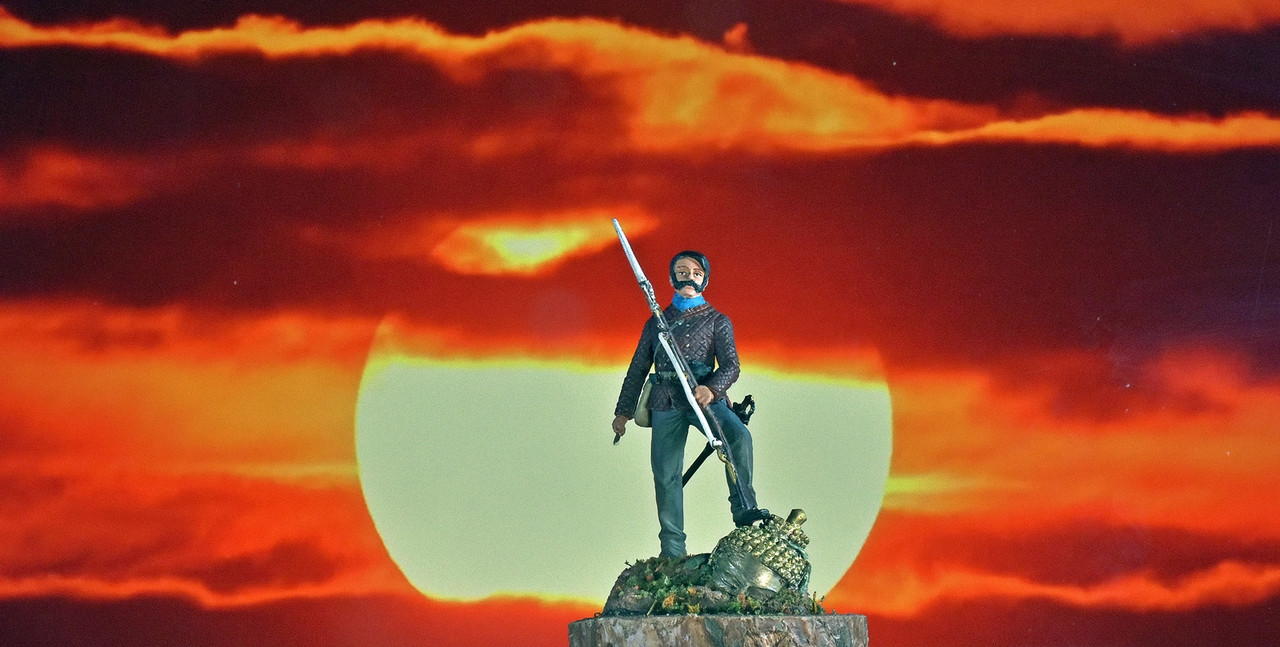
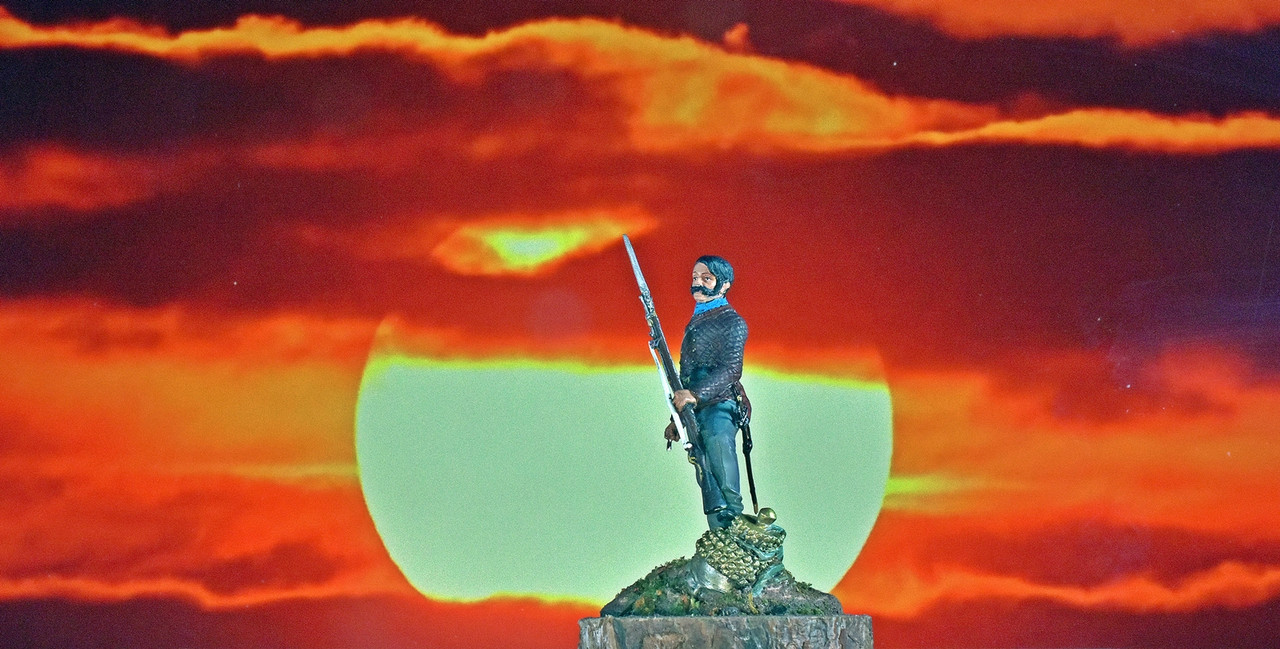
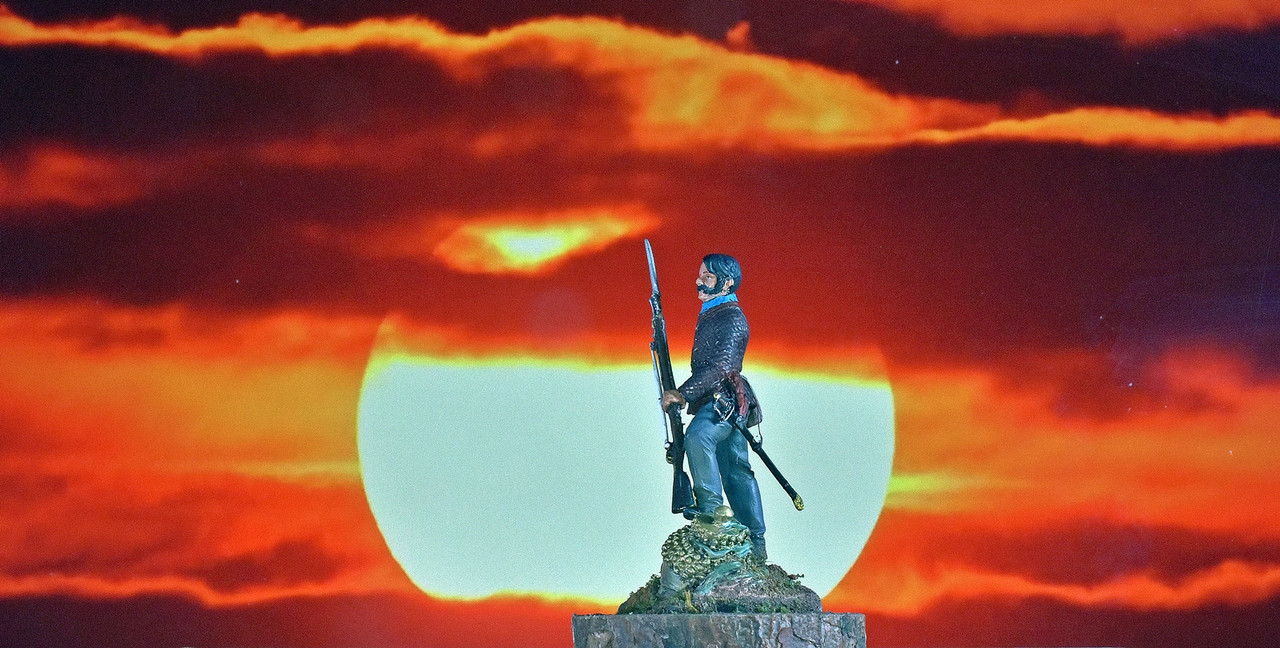
Historical Background
The Indian Mutiny had began on 10 May 1857 when sepoys at the British station in Meerut murdered their officers and proceeded to kill any Europeans unlucky enough to encounter the rebels as they ran amok before marching off to Delhi.
The commander of the station at Cawnpore was Major-General Sir Hugh Massey Wheeler, who’s small force held out for three weeks before accepting terms from the Nana Sahib, Maharaja of Bithur and rebel leader. The Nana agreed to provide boats at a landing on the banks of the Ganges, called the Suti Chowra Ghat, to transport the British to safety at Allahabad.
Just as the British at the river began wading out and boarding their boats a long bugle note was heard, whereupon concealed guns and infantry sharpshooters now opened fire, and cavalry charged into the water to cut down the helpless evacuees.
Subsequent to the Suti Chowra Ghat massacre, forces led by Major-General Henry Havelock recaptured the city on 17 July 1857, only to discover a second massacre of around 200 captive British women and children had taken place the previous day by order of the Nana.
Soon after he arrived at Cawnpore, Havelock received reports that British forces were besieged in the Residency at Lucknow. The 1st relief force under Havelock and Lieutenant-General Sir James Outram were able to enter the city, but became besieged themselves.
A larger force under Lieutenant-General Sir Colin Campbell, the newly appointed British Commander-in-Chief, was then assembled in Cawnpore to make another relief attempt and while he led his main force to Lucknow, Campbell left a detachment of about 1,500 men under Brigadier Windham to hold Cawnpore.
Having completed the 2nd Relief of Lucknow, Campbell now began to withdraw back to Cawnpore with 3,000 troops and a convoy containing 2,000 sick, wounded and non-combatants; plus a somewhat disconsolate Flashman, after the astute Campbell had appointed him to his staff – no doubt so he could keep a close eye on the arch-cad.
Meanwhile, the Nana Sahib's lieutenant, Tantya Tope, had been reinforced by the Gwalior Contingent, regarded as an elite native force, who had mutinied against their British officers in June and July.
On learning that Windham's base camp was being threatened by Tantya Tope, Campbell left his infantry to protect the convoy and pressed on with his cavalry, and horse artillery. When he arrived at Windham’s substantial entrenchment late on 27 November he found that Tantya Tope's 14,000 strong army had occupied the city of Cawnpore.
After a rebel attack on 5 December was beaten off, Campbell was now ready to make his own attack. On 6 December, Windham opened a violent bombardment from the entrenchment to deceive the rebels that Campbell was about to attack their left. The real attack was made on their right, curling around the city of Cawnpore to threaten the rebel left flank. Campbell's artillery, which included many guns that were heavier than those possessed by the rebels, particularly the 24-pounders manned by the sailors of the Naval Brigade, was the decisive factor during the battle.
As the Gwalior Contingent broke and fled, the Nana Sahib's own retainers and adherents were defeated north of the city. The pursuit by British cavalry was pressed as hard as possible all the way to the now deserted palace at Bithur. The Nana Sahib's treasury was discovered the next day, concealed down a dry well.
No doubt a substantial amount of the loot found its way into Flashman’s sticky hands.

